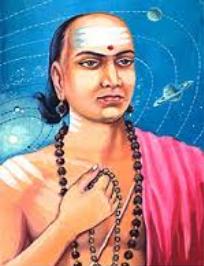PERSONAJE E HISTORIA
Biografía de
Aryabhata
Aryabhata: (aproximadamente del 476 al 550) Taregana, bihar, india.
 Fue el primer matemático de la era clásica de la india,
un gran astrónomo también. Su nombre viene del sanscrito. Sus estudios los
realizo en la capital de bihar (patliputra) y no hay evidencia que haya
estudiado sus bases en otros lugares, de hecho, aryabhata construyo un
observatorio astronómico y un sitio de enseñanza en el templo del sol del siglo
VI en esa misma ciudad.
Fue el primer matemático de la era clásica de la india,
un gran astrónomo también. Su nombre viene del sanscrito. Sus estudios los
realizo en la capital de bihar (patliputra) y no hay evidencia que haya
estudiado sus bases en otros lugares, de hecho, aryabhata construyo un
observatorio astronómico y un sitio de enseñanza en el templo del sol del siglo
VI en esa misma ciudad.
Se tiene la certeza que aryabhata realizó sus estudios
avanzados en Kusumapura y que vivió algún tiempo allí.
Aryabhata es el autor de varios textos de matemática y
astronomía, lastimosamente muchos de sus textos se han perdido, pero la mayor
de sus obras, llamada Aryabhatiya, se encuentra guardada y aun sobrevive, este
texto es un compendio de trabajos de él, contiene sobre trigonometría,
aritmética, y algebra, también contiene un poco de fracciones continuas,
ecuaciones cuadráticas, incluso hace una aproximación al número π, este texto
fue referido por mucho tiempo en la literatura matemática de la india.
Hay otro texto importantísimo llamado Arya-siddhanta,
es un gran trabajo de astronomía, donde trabaja en la creación de instrumentos
astronómicos, para medir ángulos y el tiempo. Diseño el método de mediodía-noche.
También creo el sistema de notación posicional y el
cero, en un texto llamado bakhshali, donde usaba la notación posicional pero no
le había asignado una representación al cero, aun así, estaba contenido en el
manuscrito el significado y el funcionamiento de un valor nulo.
Otro postulado que realizo sobre astronomía, y creo que
el más importante de todos debido a su adelanto, fue el de plantear el
movimiento de la tierra sobre su propio eje, el cual lo explicaba con los
ángulos y los semicírculos que describen el movimiento de las estrellas y la
luna. Planteo también que nuestra vista al cielo era muy relativa, y que
dependíamos de nuestro sistema de referencia en constante movimiento, entonces
concluyo que las estrellas se movían en sentido contrario al movimiento de la
tierra.
Finalmente, sus aportes astronómicos y de trigonometría
influencio a sus culturas vecinas, mediante traducciones y viajeros, la más
influenciada fue la traducción árabe, la cual tuvo gran auge en el islam.
Biography of Aryabhata
He was the first mathematician of the classical era of
India, a great astronomer as well. His name comes from the Sanskrit. His
studies are in the capital of bihar (patliputra) and there is no evidence that
he has studied its bases in other places, in fact, aryabhata built an
astronomical observatory and a teaching site in the temple of the sun of the
6th century in that same city .
It is certain that aryabhata carried out his advanced
studies in Kusumapura and that he lived there for some time.
Aryabhata is the author of several texts of mathematics
and astronomy, unfortunately many of his texts have been lost, but the greatest
of his works, called Aryabhatiya, is stored and still survives, this text is a
compendium of works of him, contains on Trigonometry, arithmetic, and algebra,
also contains some continuous fractions, quadratic equations, even makes an
approximation to the number π, this text was referred to for a long time in Indian
mathematical literature.
There is another important text called Arya-siddhanta,
it is a great work of astronomy, where he works in the creation of astronomical
instruments, to measure angles and time. Design the noon-night method.
I also created the system of positional notation and
zero, in a text called bakhshali, where he used positional notation but had not
assigned a representation to zero, even so, the meaning and operation of a null
value was contained in the manuscript.
Another postulate I made on astronomy, and I think the
most important of all because of its advancement, was to pose the movement of
the earth on its own axis, which explained it with the angles and semicircles
that describe the movement of Stars and the moon. I also stated that our view
of the sky was very relative, and that we depended on our constantly moving
reference system, so I concluded that the stars moved in the opposite direction
of the Earth's motion.
Finally, his astronomical and trigonometric
contributions influenced his neighboring cultures, through translations and
travelers, the most influenced being the Arabic translation, which had a great
rise in Islam.


Comentarios
Publicar un comentario